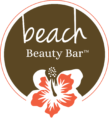Imagine you want to wear that favorite black T-shirt of yours but you’re also scared of the white flakes on your shoulders because your scalp is covered with dandruff. It’s embarrassing and disheartening. And if things weren’t tough already, acne chooses to surprise you when you least expect it. We understand your constant struggle while dealing with dandruff and acne.
But have you ever wondered if there might be a connection between the two? There are some simple dos and don’ts of clearing that acne that is brought on by dandruff. But first, have you ever considered what actually causes dandruff in the first place?
What Causes Dandruff and Acne?
Excess sebum production leads to fungus formation that produces dandruff. The skin of your scalp is super active and produces skin cells continually. Hence, this also means skin cells die out on a regular basis.
However, due to an oily scalp, skin cells accumulate and mix with scalp oil. This forms those white flakes you complain about that fall off your head, and just like that, you have dandruff.
Excess sebum production also means more dandruff. This can also lead to acne since the scalp and the forehead are connected, after all.
How Are the Two Related?
Dandruff and acne are related because dandruff is known to worsen existing acne. Dandruff flakes drift down from the scalp and hair, land on the face and other parts of your body contributing to the oily mixture that clogs pores and creates acne.
Having a dandruff condition triggers acne breakouts everywhere on your skin – this includes breakouts on your scalp, face, back, and scalp. Because dandruff clogs your pores – and acne is caused by clogged pores resulting from a build-up of oils and dead skin cells.
Curing your dandruff can also help clear your skin.
How to Get Rid of Dandruff and Dandruff-Related Acne
There are a few ways you can remedy breakouts brought on by dandruff. The best way to get rid of dandruff-related acne is to get rid of dandruff. Use these tips to help clear your acne and curb your dandruff:
- Keep Hair off the Face – Keeping your hair away from and off of your face will help prevent dandruff flakes from getting onto your face, clogging your pores, and causing an acne breakout.
- Brush Your Hair – Brushing your hair not only keeps it healthy, but it also helps loosen and remove dandruff flakes before they have a chance to drift down to your face. Brush your hair at least twice per day.
- Apply Conditioner Correctly – When you’re conditioning your hair, ensure that you’re sticking to the mid-lengths to the tips of your hair. Conditioners aren’t meant for the scalp. The residue of the conditioner can make the scalp oily, and this will worsen dandruff. *Be sure to rinse your hair to the side, not directly against your back*
- Use a Medicated Shampoo for Dandruff – Kick your dandruff once and for all with a dandruff shampoo specifically targeting your problem without exacerbating your acne. Head and Shoulders is NOT an acne-safe shampoo. Wash your hair regularly (daily if you have dandruff).
Acne-Safe Products for Hair
Head and shoulders is absolutely the worst shampoo for triggering acne (anything containing sodium laurel or laureth sulfate is acne’s enemy). Choosing a dandruff shampoo wisely is the key to clearing dandruff while not causing breakouts.
Our Acne Safe Shopping List is your best friend when it comes to trying or finding new product that is acne-safe. T-Sal by Neutrogena is an approved acne-safe shampoo we recommend using.
The styling products you use have the same effect as your shampoo and conditioner. The culprit may be your hair care products. Shampoos, conditioners, and styling products can cause whiteheads and other types of acne in these areas. The bumps can be so subtle that you can feel but not see them. Some people develop numerous, closely packed bumps that they can see.
The Bottom Line
Dandruff and acne are inner linked. Using an acne-safe shampoo that targets your dandruff but won’t clog your pores is the key to having clear skin!
You don’t want to undo the healing of your scalp by introducing pore-clogging styling products or shampoo to your hair. Think of your scalp as an open wound. Now imagine throwing an alcohol-based or chemical-based formula into the mix.
Not a good idea. If a product doesn’t have healing properties, get rid of it. And lastly, if nothing is working for you or you feel like you need some guidance — Schedule your virtual consultation today & let us help you on your clear skin journey!
Cheers to clear!
Rene

